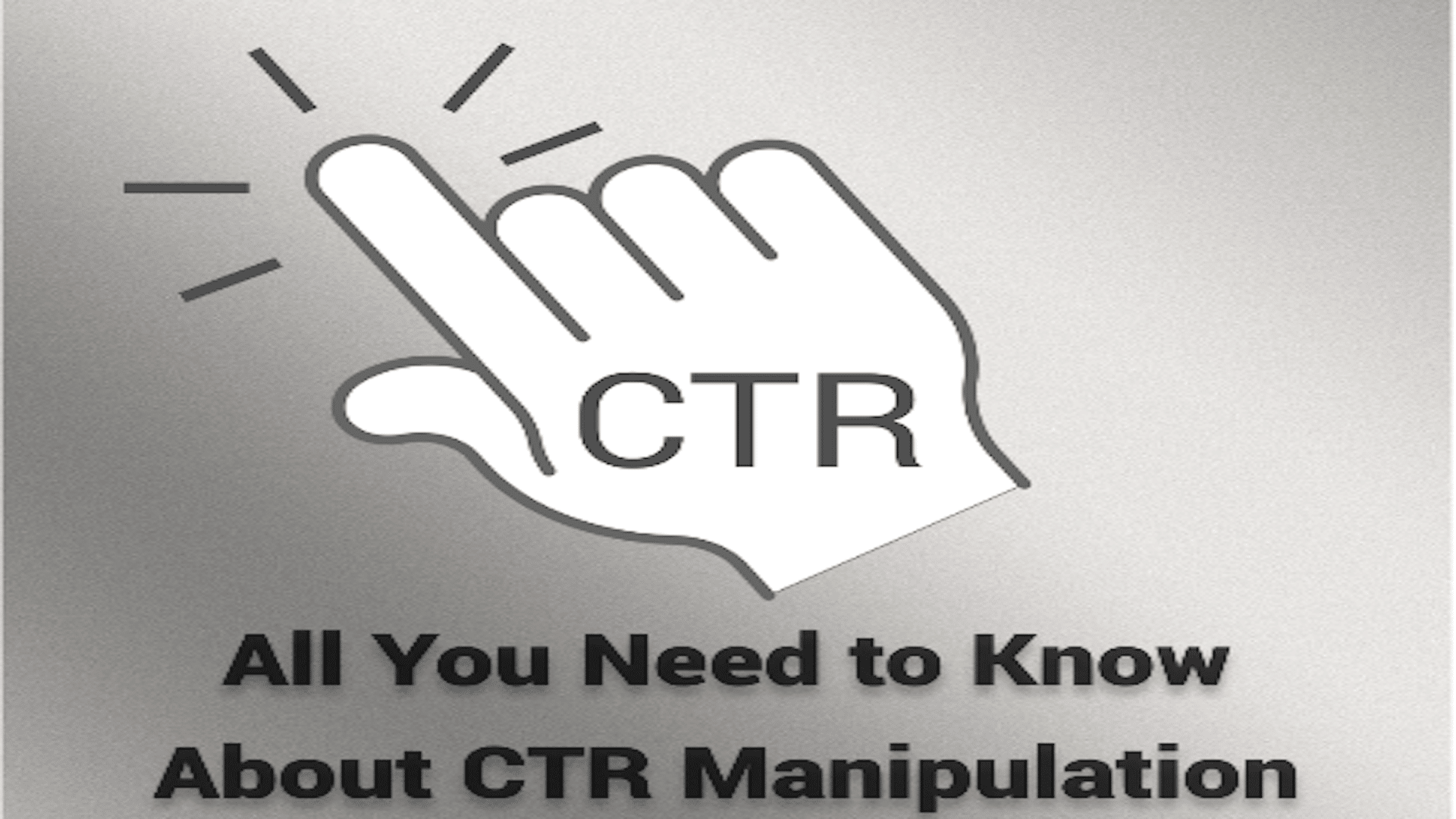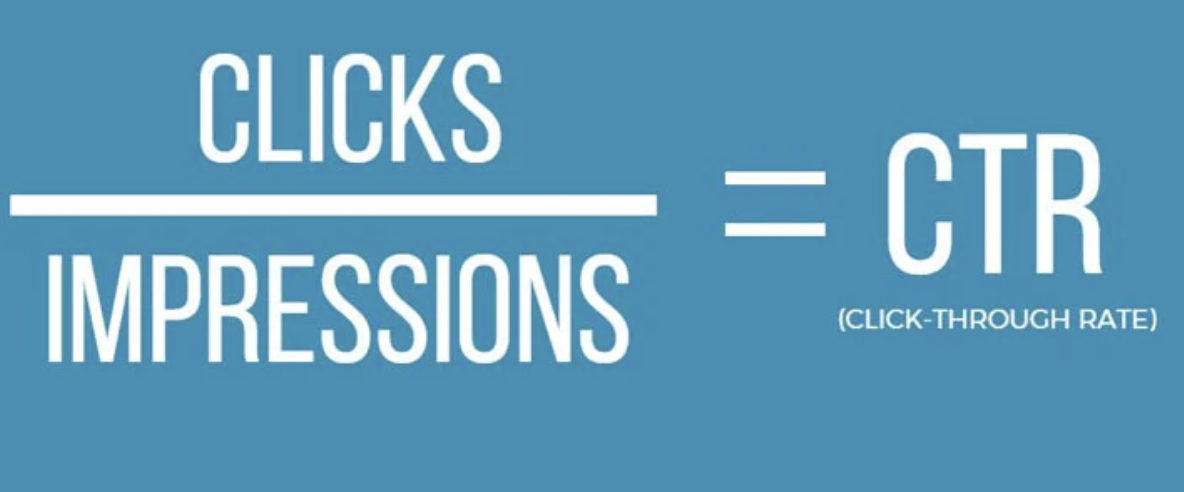The Ultimate Overview to Executing Effective CTR Manipulation Techniques
Wiki Article
Accomplishing Success With Targeted CTR Control
The optimization of click-through rates (CTR) is an essential venture for brands intending to enhance their digital presence and make best use of interaction. Targeted CTR adjustment encompasses a variety of methods, from data-driven advertisement placements to the development of engaging material customized to specific audiences. Comprehending the nuances of customer habits and employing techniques such as A/B screening can considerably influence efficiency end results. However, the journey to mastering these strategies is complex and requires an ongoing dedication to evaluation and improvement. The concern remains: what details approaches will yield the most considerable lead to this vibrant landscape?Recognizing Click-Through Fees
Click-through rates (CTR) serve as a crucial metric in digital advertising and marketing, mirroring the performance of online material in driving customer engagement. This statistics is determined by separating the variety of clicks an ad or link receives by the overall number of impressions, expressed as a percentage (GMB CTR Manipulation). A higher CTR indicates that the content resonates well with the target audience, motivating them to actRecognizing CTR is necessary for marketing experts aiming to maximize their campaigns. Different aspects affect CTR, consisting of ad positioning, design, and the importance of the content to the target market's rate of interests. Compelling headings and visually appealing photos can significantly enhance the possibility of users clicking on a link.
In addition, the context in which the web content is provided plays an important role in figuring out CTR. Inevitably, a thorough understanding of CTR empowers marketing professionals to refine their methods, guaranteeing that digital projects attain their desired outcomes effectively.
Importance of CTR Control
In the competitive landscape of digital advertising, the control of click-through prices (CTR) has actually come to be an important approach for enhancing campaign efficiency. CTR serves as an essential performance indicator, reflecting the efficiency of online ads and material in attracting customer engagement. A higher CTR not only signifies better interest but also can result in boosted online search engine rankings and reduced cost-per-click (CPC) prices, consequently enhancing overall advertising spending plans.The importance of CTR manipulation lies in its capability to inform marketing professionals concerning consumer preferences and behaviors. By analyzing CTR information, businesses can identify which elements of their campaigns reverberate most with their target market. This understanding enables even more educated decision-making and the allocation of resources to one of the most reliable channels.
Furthermore, reliable CTR manipulation cultivates a competitive benefit. Therefore, grasping CTR control is not merely helpful; it is vital for accomplishing sustained success in digital marketing initiatives.
Techniques for Targeted CTR
Accomplishing targeted click-through prices (CTR) calls for a tactical method that incorporates different strategies tailored to particular target market sections. One efficient strategy is optimizing ad placements by using data analytics to determine high-performing networks. By focusing efforts on these channels, marketing experts can enhance presence and rise interaction.Another essential technique is crafting engaging headlines and calls to action (CTAs) A/B testing various variants can reveal which mixes resonate most with the target audience, consequently driving higher CTR. In addition, integrating visual aspects such as attractive images or video clips can substantially enhance charm, making content extra engaging and shareable.
Customization also plays a vital role; utilizing user data to create customized content can foster a sense of significance, urging clicks. In addition, leveraging social proof with reviews and user-generated material can build trust fund, eventually improving CTR.
Studying Individual Behavior
 Recognizing user behavior is necessary for maximizing advertising and marketing approaches and improving overall performance. By assessing how customers engage with content, marketing professionals can gain important understandings into preferences, motivations, and pain factors. This knowledge enables the advancement of more targeted campaigns that reverberate with specific target market segments.
Recognizing user behavior is necessary for maximizing advertising and marketing approaches and improving overall performance. By assessing how customers engage with content, marketing professionals can gain important understandings into preferences, motivations, and pain factors. This knowledge enables the advancement of more targeted campaigns that reverberate with specific target market segments.To successfully examine user habits, numerous devices and methodologies can be used. Web analytics platforms supply data on user involvement metrics such as click-through prices, bounce prices, and time spent on page. Heatmaps and session recordings permit marketing professionals to imagine individual interactions, revealing which components stand out and which might be overlooked.
In addition, customer responses with surveys and responses kinds can supply qualitative insights, boosting the understanding of user sentiment and contentment. Segmenting customers based on habits, interests, and demographics can even more fine-tune targeting initiatives, customizing content to meet varied demands.
Ultimately, continuous analysis of individual habits is crucial for adjusting marketing approaches in real-time. As user fads advance, staying attuned to these changes guarantees that projects stay reliable and pertinent, fostering a much deeper connection with the target audience. This foundational understanding establishes the stage for the effective application of targeted CTR control strategies.
Measuring Success and Changing Strategies
Gauging success in targeted marketing campaigns calls for a critical strategy that integrates performance metrics with recurring analysis. Trick efficiency indications (KPIs) such as click-through rates (CTR), conversion rates, and consumer purchase costs need to be kept an eye on continually to evaluate the efficiency of control approaches. By developing a standard, marketing experts can examine adjustments in CTR check my site and identify fads that suggest successful involvement or possible drawbacks.Routinely evaluating these metrics enables the prompt modification of methods. For instance, if a certain project reveals a significant decrease in CTR, it may signify the need for creative revisions or a reevaluation of targeting parameters. Employing A/B testing can additionally fine-tune techniques by contrasting variations of advertisements or touchdown pages, offering insight right into what reverberates finest with the target market.
Additionally, incorporating qualitative comments through surveys or redirected here customer meetings can supplement measurable information, supplying an extensive sight of target market assumption. Ultimately, the ability to iteratively analyze and improve techniques based upon real-time information cultivates a much more receptive advertising technique, ensuring that campaigns continue to be straightened with company objectives and target market preferences. This flexible technique is essential in achieving continual success in targeted CTR manipulation.
Conclusion
In conclusion, targeted CTR adjustment is necessary for maximizing digital advertising and marketing initiatives. By comprehending click-through rates and employing critical strategies, brands can properly boost individual interaction and drive conversions. Constant analysis of individual behavior and attentive dimension of performance indications facilitate prompt adjustments, making sure positioning with consumer choices. Inevitably, successful CTR manipulation not just boosts presence yet also cultivates trust fund and credibility, thereby adding to sustained development in open markets.
 Targeted CTR adjustment includes a variety of techniques, from data-driven advertisement placements to the growth of engaging material customized to certain target markets.Click-through prices (CTR) serve as a vital metric in electronic advertising and marketing, reflecting the effectiveness of on the internet web content in driving individual involvement. A greater CTR suggests that the content reverberates well have a peek here with the target audience, motivating them to take action.
Targeted CTR adjustment includes a variety of techniques, from data-driven advertisement placements to the growth of engaging material customized to certain target markets.Click-through prices (CTR) serve as a vital metric in electronic advertising and marketing, reflecting the effectiveness of on the internet web content in driving individual involvement. A greater CTR suggests that the content reverberates well have a peek here with the target audience, motivating them to take action.CTR serves as a vital efficiency sign, mirroring the effectiveness of online promotions and material in attracting customer involvement.In conclusion, targeted CTR manipulation is important for maximizing digital marketing initiatives.
Report this wiki page